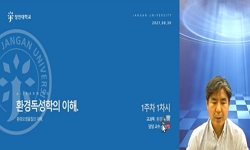The combined absorption of NO and SO2 into the Fe(II)-ethylenediamineteraacetate(EDTA) solution has been realized. Activated carbon is used to catalyze the reduction of FeIII-EDTA to FeII-EDTA to maintain the ability to remove NO with the Fe-EDTA solu...
http://chineseinput.net/에서 pinyin(병음)방식으로 중국어를 변환할 수 있습니다.
변환된 중국어를 복사하여 사용하시면 됩니다.
- 中文 을 입력하시려면 zhongwen을 입력하시고 space를누르시면됩니다.
- 北京 을 입력하시려면 beijing을 입력하시고 space를 누르시면 됩니다.



Removal of nitric oxide and sulfur dioxide from flue gases using a FeII-ethylenediamineteraacetate solution
한글로보기https://www.riss.kr/link?id=A104481695
-
저자
Xiang-li Long (East China University of Science and Technology) ; Hai-Song Zhu (East China University of Science and Technology) ; Yan-Peng Mao (East China University of Science and Technology) ; Yu Chen (East China University of Science and Technology) ; Wei-kang Yuan (East China University of Science and Technology)
- 발행기관
- 학술지명
- 권호사항
-
발행연도
2013
-
작성언어
English
- 주제어
-
등재정보
KCI등재,SCIE,SCOPUS
-
자료형태
학술저널
- 발행기관 URL
-
수록면
1241-1247(7쪽)
-
KCI 피인용횟수
8
- DOI식별코드
- 제공처
-
0
상세조회 -
0
다운로드
부가정보
다국어 초록 (Multilingual Abstract)
The combined absorption of NO and SO2 into the Fe(II)-ethylenediamineteraacetate(EDTA) solution has been realized. Activated carbon is used to catalyze the reduction of FeIII-EDTA to FeII-EDTA to maintain the ability to remove NO with the Fe-EDTA solution. The reductant is the sulfite/bisulfite ions produced by SO2 dissolved into the aqueous solution. Experiments have been performed to determine the effects of activated carbon of coconut shell,pH value, temperature of absorption and regeneration, O2 partial pressure, sulfite/bisulfite and chloride concentration on the combined elimination of NO and SO2 with FeII-EDTA solution coupled with the FeII-EDTA regeneration catalyzed by activated carbon. The experimental results indicate that NO removal efficiency increases with activated carbon mass.
There is an optimum pH of 7.5 for this process. The NO removal efficiency increases with the liquid flow rate but it is not necessary to increase the liquid flow rate beyond 25 ml min−1. The NO removal efficiency decreases with the absorption temperature as the temperature is over 35 oC. The Fe2+ regeneration rate may be speeded up with temperature.
The NO removal efficiency decreases with O2 partial pressure in the gas streams. The NO removal efficiency is enhanced with the sulfite/bisulfite concentration. Chloride does not affect the NO removal. Ca(OH)2 and MgO slurries have little influence on NO removal. High NO and SO2 removal efficiencies can be maintained at a high level for a long period of time with this heterogeneous catalytic process.
참고문헌 (Reference)
1 F. Nakahjima, 29 : 109-, 1996
2 J. Muñiz, 27 : 27-, 2000
3 B.C. Huang, 126 : 279-, 2007
4 K. Rahkamaa-Tolonen, 100 : 217-, 2005
5 A. Raj, 15 : 259-, 1998
6 S.G. Chang, 27 : 2156-, 1988
7 E. K. Pham, 369 : 139-, 1994
8 N. Y. Hishinuma, 52 : 2863-, 1979
9 E. Sada, 19 : 377-, 1980
10 S.-M. Yih, 42 : 145-, 1989
1 F. Nakahjima, 29 : 109-, 1996
2 J. Muñiz, 27 : 27-, 2000
3 B.C. Huang, 126 : 279-, 2007
4 K. Rahkamaa-Tolonen, 100 : 217-, 2005
5 A. Raj, 15 : 259-, 1998
6 S.G. Chang, 27 : 2156-, 1988
7 E. K. Pham, 369 : 139-, 1994
8 N. Y. Hishinuma, 52 : 2863-, 1979
9 E. Sada, 19 : 377-, 1980
10 S.-M. Yih, 42 : 145-, 1989
11 F. Gambardella, 61 : 6880-, 2006
12 L. Wang, 132 : 227-, 2007
13 Y. Kurimura, 41 : 2234-, 1968
14 V. Zang, 29 : 1705-, 1990
15 H. J. Wubs, 32 : 2580-, 1993
16 M. Teramoto, 11 : 450-, 1978
17 Z.B. Wu, 140 : 130-, 2008
18 F. Gambardella, 116 : 67-, 2006
19 P. Maas, 7 : 243-, 2009
20 I. Manconi, 15 : 40-, 2006
21 L. Singoredjo, 31 : 213-, 1993
22 P.M. Alvárez, 92 : 293-, 2009
23 C. J. Pereira, "NOx control from stationary sources" American Chemical Society 552 : 1-, 1995
동일학술지(권/호) 다른 논문
-
- 한국화학공학회
- 최정동
- 2013
- KCI등재,SCIE,SCOPUS
-
- 한국화학공학회
- Hassan Pahlavanzadeh
- 2013
- KCI등재,SCIE,SCOPUS
-
- 한국화학공학회
- Xuefeng Yan
- 2013
- KCI등재,SCIE,SCOPUS
-
- 한국화학공학회
- Akbar Zendehnam
- 2013
- KCI등재,SCIE,SCOPUS
분석정보
인용정보 인용지수 설명보기
학술지 이력
| 연월일 | 이력구분 | 이력상세 | 등재구분 |
|---|---|---|---|
| 2023 | 평가예정 | 해외DB학술지평가 신청대상 (해외등재 학술지 평가) | |
| 2020-01-01 | 평가 | 등재학술지 유지 (해외등재 학술지 평가) |  |
| 2016-06-21 | 학술지명변경 | 한글명 : The Korean Journal of Chemical Engineering -> Korean Journal of Chemical Engineering외국어명 : The Korean Journal of Chemical Engineering -> Korean Journal of Chemical Engineering |  |
| 2011-01-01 | 평가 | 등재학술지 유지 (등재유지) |  |
| 2009-01-01 | 평가 | 등재학술지 유지 (등재유지) |  |
| 2007-09-27 | 학회명변경 | 영문명 : The Korean Institute Of Chemical Engineers -> The Korean Institute of Chemical Engineers |  |
| 2007-09-03 | 학술지명변경 | 한글명 : The Korean Journal of Chemical Engineeri -> The Korean Journal of Chemical Engineering외국어명 : The Korean Journal of Chemical Engineeri -> The Korean Journal of Chemical Engineering |  |
| 2007-01-01 | 평가 | 등재학술지 유지 (등재유지) |  |
| 2005-01-01 | 평가 | 등재학술지 유지 (등재유지) |  |
| 2002-01-01 | 평가 | 등재학술지 선정 (등재후보2차) |  |
| 1999-07-01 | 평가 | 등재후보학술지 선정 (신규평가) |  |
학술지 인용정보
| 기준연도 | WOS-KCI 통합IF(2년) | KCIF(2년) | KCIF(3년) |
|---|---|---|---|
| 2016 | 1.92 | 0.72 | 1.4 |
| KCIF(4년) | KCIF(5년) | 중심성지수(3년) | 즉시성지수 |
| 1.15 | 0.94 | 0.403 | 0.14 |




 KCI
KCI






